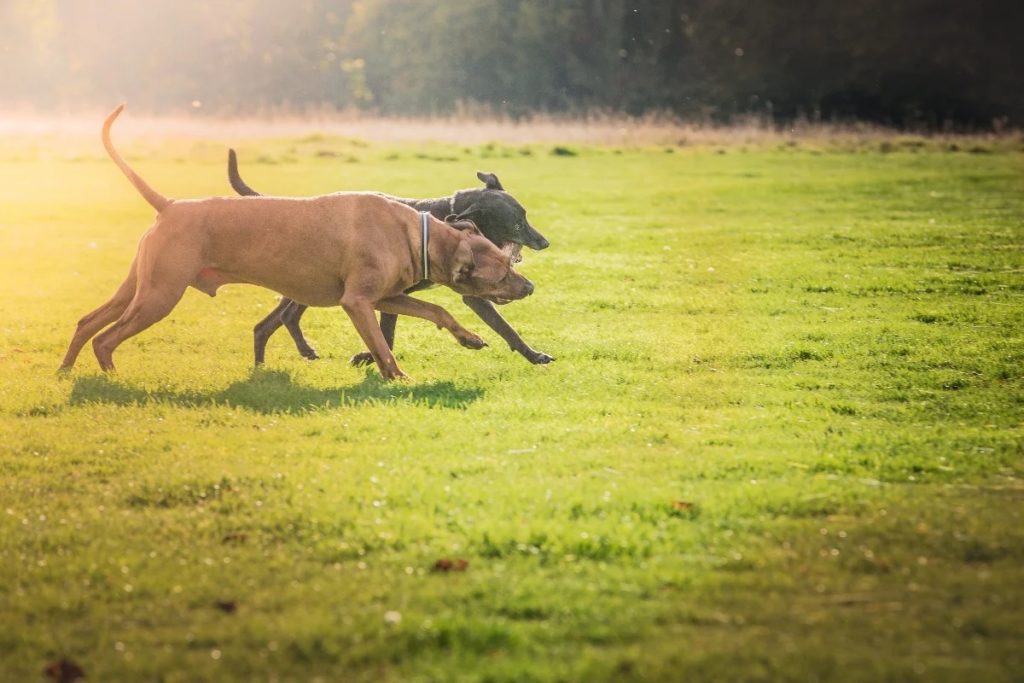By Dr Craig Waldron, Behaviour Vet
During Summer, there is nothing more enjoyable than taking your dog for a nice long walk, you’ll both feel all the better for it. However as professional dog walkers, we are aware that this freedom increases the dangers your dog can be exposed to. So here are our Essential Tips to help you make sure that you and your dog make the most of the great outdoors.
Heat Stroke
It’s all too easy to forget that dogs are not as good as humans at dealing with hot weather and they can easily overheat, especially if they are enjoying a game chasing after a ball. Here are some tips from vet Craig Waldron to prevent heatstroke.
- Avoid leaving dogs in hot cars.
- Exercising dogs at dawn / dusk on hot days, when the weather is cooler, and reduce the amount of exercise they have.
- Make sure dogs can access shade on hot days.
- Make sure dogs have access to fresh water at all times
- Remembering long-haired, black, short-nosed, overweight and elderly dogs are especially at risk in hot weather, even on a regular walk.
How can I tell if my dog has heatstroke?
Your dog might be panting excessively, distressed or even collapsed.
What should I do if I think my dog has heatstroke?
If you suspect heatstroke in a dog, consider the following actions:
- Seek veterinary advice immediately – the patient is likely to require urgent or emergency veterinary attention.
- Aim to cool the dog slowly. Never abruptly submerse them in cold water.
- Get the dog into the shade.
- Wrap the dog in a wet sheet or towel, and keep it damp, by replenishing it with cold water.
- Fan the dog, if a sheet or towel is not available, or use a sponge with cold water.
- Allow the dog to drink water little and often.
Watch out for hot pavements
Ouch! Take care on pavements – they heat up in the sun and can easily burn those pads. Here’s a good test – put the back of your hand on the pavement, and if you can’t keep it there for 5 seconds, it’s too hot for your dog to walk on.
Hot Cars & Spaces
You should not leave your dog in the car for even a minute on a sunny day even with the window slightly open. The same also applies to hot, airless rooms such as a conservatory. At 25 degrees Celsius, dogs in hot cars begin to pant excessively within 2 minutes and can die in less than 15 minutes.
Take care if going on a long journey on a hot day especially if you carry your dog behind the rear seats – remember they are surrounded by more glass than you are. If you have air conditioning make sure you use it and direct the airflow towards your pet. If you don’t, drive with the window down – the air will help them pant and cool off. Whatever you do, make sure you have plenty of water and take regular breaks.
Preventing Sunburn
When we go out in the sun we plaster ourselves with sun cream, but do we ever do the same for our four legged friends? All hairless breeds and dogs that have been clipped should be kept out of the sun as much as possible. Breeds such as terriers, spaniels, Chihuahuas, Doberman pinschers and other shorthaired dogs, as well as all breeds with white or pink skin, are at high risk from sunburn.
Dogs are pretty good at finding shade but if you know where you are going doesn’t have much, then take along either a special sunblock from your vet.
It is also a good idea to keep dogs indoors or well shaded areas between 10am and 4pm when the sun is at its fiercest.
We hope you have found these few simple precautions from We Love Pets helpful in making enjoying the great outdoors in Summer with your pet safer and less of a worry. If you have any concerns please contact your vet for advice.
Disclaimer: No liability is assumed for the content of this article. Advice given is not a substitute for proper consultation with a veterinary surgeon, and is intended as a guide only, to the best of the author’s knowledge. You should consult a pet’s registered veterinary surgeon if you have any concerns in relation to the health and welfare of an animal under your care. In an emergency, seek this advice urgently. If you find any potentially erroneous information in this update, please inform your manager – knowledge of this condition is an evolving process, as is veterinary medicine




